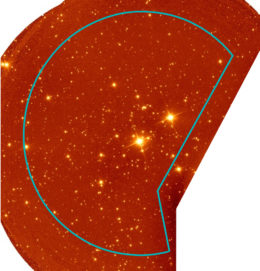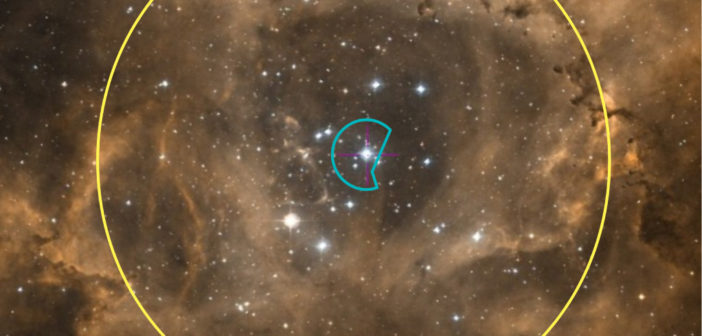
Gemini infrared image of the center of the Rosette Nebula. The cyan-outlined region corresponds to the cyan-outlined region in the cover image above. [Mužić et al. 2019]
You’re looking at a 55’ x 55’ Deep Sky Survey image of the Rosette Nebula (click for the full view), a large, spherical, star-forming region located about 5,200 light-years away. In a recent study led by Koraljka Mužić (University of Lisbon, Portugal), a team of scientists has used the Gemini South telescope in Chile to obtain near-infrared images from deep in the heart of the nebula. Zooming in on a region of less than 25 square light-years (the central cyan-outlined region in the photos above and to the right), Mužić and collaborators have imaged the center of NGC 2244, a young, high-density stellar cluster forming massive stars. In their study, the authors seek to understand how low-mass stars and brown dwarfs form and evolve among their high-mass siblings in these extreme environments. To learn more, check out the article below.
Citation
“Looking Deep into the Rosette Nebula’s Heart: The (Sub)stellar Content of the Massive Young Cluster NGC 2244,” Koraljka Mužić et al 2019 ApJ 881 79. doi:10.3847/1538-4357/ab2da4


1 Comment
Pingback: From AAS NOVA: “Featured Image: The Heart of the Rosette Nebula” | sciencesprings